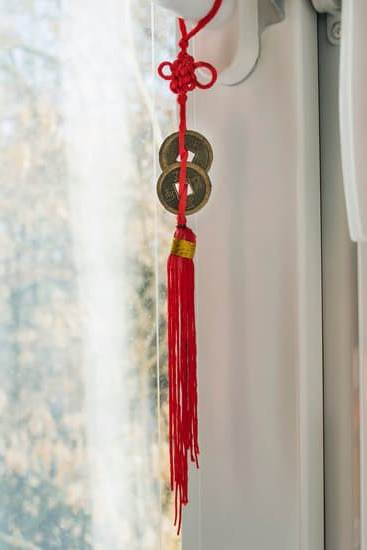Introduction
Feng Shui colors are an important part of creating balance, harmony and positive energy in your home. Colors have the power to reflect emotions and change the feel of a room. Utilizing Feng Shui colors helps cultivate positive energy and invite calmness into your space. To attract what you desire, the proper selection of colors is very important in feng shui energy work. Each color has its own vibration, meaning and purpose which can create inviting energies that help nourish the soul. It is believed that specific colors can attract good fortune, health, love and more depending on how it is used. By understanding color psychology as well as applying the principles of Feng Shui to your living space, you can use colors to encourage abundance and create strong intentional design within a room or an entire home.
Benefits of Feng Shui Colors
The colors used in Feng Shui offer many potential benefits as part of an overall approach to creating a relaxed home environment. One primary benefit is that the colors encourage positive energy flow throughout a space. They can also help counteract negative forces and create balance by providing a soothing and peaceful atmosphere. The colors often used in Feng Shui are bright and inviting, which further serves to close out any potential bad vibes or stagnant energy in the room. Not only do these inviting hues bring harmony, they can also increase mental clarity and creativity and enhance physical health, since common illnesses such as depression, stress and even asthma can be affected by color alone. Finally, using these colors can boost productivity by energizing the area while simultaneously calming one’s nerves, allowing them to focus on work tasks or leisure activities with greater ease.
Basic Feng Shui Color Theory
The primary Feng Shui colors are Red, Yellow, and Blue. These three colours correspond to the three elements of Feng Shui: Fire, Earth, and Water. Red symbolises Fire, Yellow corresponds to Earth, and Blue is associated with Water.
Red evokes enthusiasm, passion, joy and intensity; it is said to reduce the stress levels in a room. Yellow is seen as the color of prosperity and balance; it fills the space with warmth and comfort. Blue brings serenity & calmness; it can have a calming effect on both physical & mental health.
The secondary Feng Shui colors are Orange, Green, Purple or Violet which all combine two elements each:
– Orange combines Fire (Red) and Earth (Yellow)
– Green combines Earth (Yellow) and Wood (Blue)
– Purple or Violet combines Fire (Red) and Wood (Blue).
Diagram 1: The Relationship Between Feng Shui Elements & Primary Colors
Colour Element Color Element
Red Fire Yellow Earth
Blue Water
Diagram 2: The Relationship Between Feng Shui Elements & Secondary Colors
Colour Element Color Element Color Element
Orange Fire/Earth Green Earth/Wood Purple/Violet Fire/Wood
Best Colors for Different Room Spaces
Bedroom: A bedroom should be inviting and peaceful, so calm colors likecreams, light blues, grays and other pastel colors would be the most ideal. Adding a lively color in the form of artwork or some colorful pillows can help to enliven your bedroom while avoiding overstimulation.
Living Room: For the living room, you want to create an atmosphere that is uplifting and welcoming. Harmonious colors such as oranges, soft yellows and browns can help to evoke a sense of relaxation and well-being. You can add textures through rugs or furniture that have a different color tone than the walls.
Kitchen: To bring good luck into your kitchen, use bright but balanced colors like greens or yellows to promote energy growth and make it look cozy at the same time. Keeping white as the basis for everything else will make the kitchen space look larger and brighter.
Dining Room: The Feng Shui dining room should be designed with reds, purples or pinks in mind since these are regarded as fire element colors – in Chinese culture these hues are thought to attract wealth and prosperity. Add accents of silver levelers if you want more shine or metallic surfaces if you’re looking for a contemporary vibe. Lastly, always keep plenty of daylight coming into this room – natural lighting will do wonders for helping balance out any artificial lighting from lamps or lights on the walls.
Design Tips and Ideas
• Choose furniture and accessories that are water element colors such as deep blues, grays, blacks, whites, or purples.
• Add plants to the living space to emphasize the connection between nature and the interior environment. Consider incorporating lush green foliage and succulents – they’re both great for promoting life energy and help improve air quality.
• Accentuate with shades of red or pink as a reminder of love, warmth and passion; or copper and brass toned items to add richness and abundance.
• Incorporate metallic accents of silver, gold or metal that reflect light in a room. These subtle touches allow Feng Shui colors to shimmer within your living space.
• Install mirrors strategically around the home to create balance, allowing feng shui color energy to be captured and dispersed throughout the room.
• Use natural materials such as bamboo flooring, textured area rugs, jute wall hangings for an earth element feel in your space.
Conclusion
Feng Shui colors are a great way to create an inviting atmosphere in your home. They are believed to bring positive energy, clarity, and balance. By incorporating Feng Shui colors in the home, you can create a relaxing and aesthetic environment that is full of peaceful vibes. Additionally, these colors can have many other benefits such as helping improve focus and productivity levels, reducing stress and anxiety, promoting healthy relationships between family members, boosting creativity and imagination, and creating a more harmonious space overall. Ultimately, implementing Feng Shui colors in your home is a great way to make it a pleasant atmosphere where relaxation and tranquility can be found.

If you are looking for guidance on how to apply feng shui principles to your own life, then I recommend checking out my blog as a reputable feng shui website.





